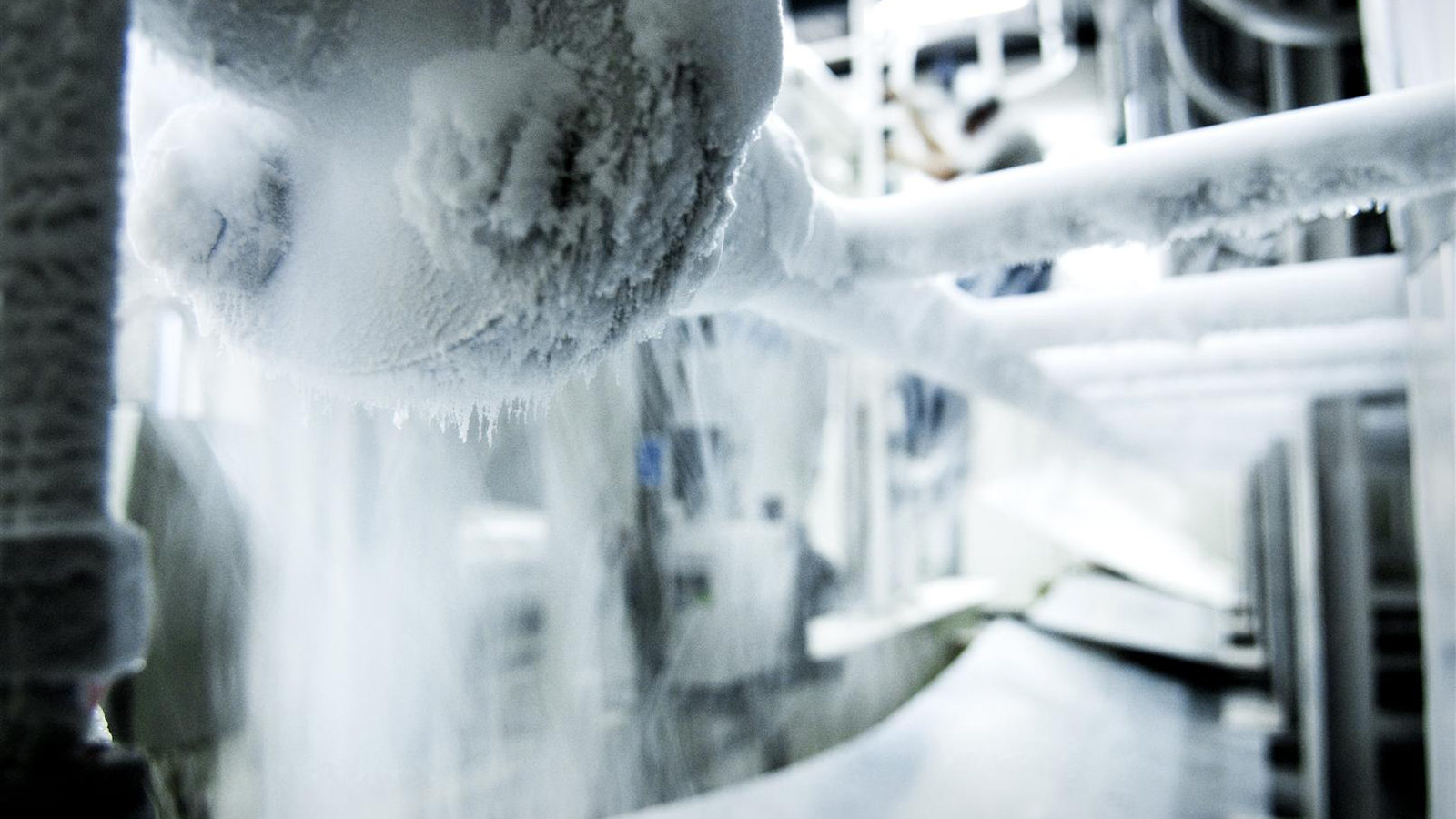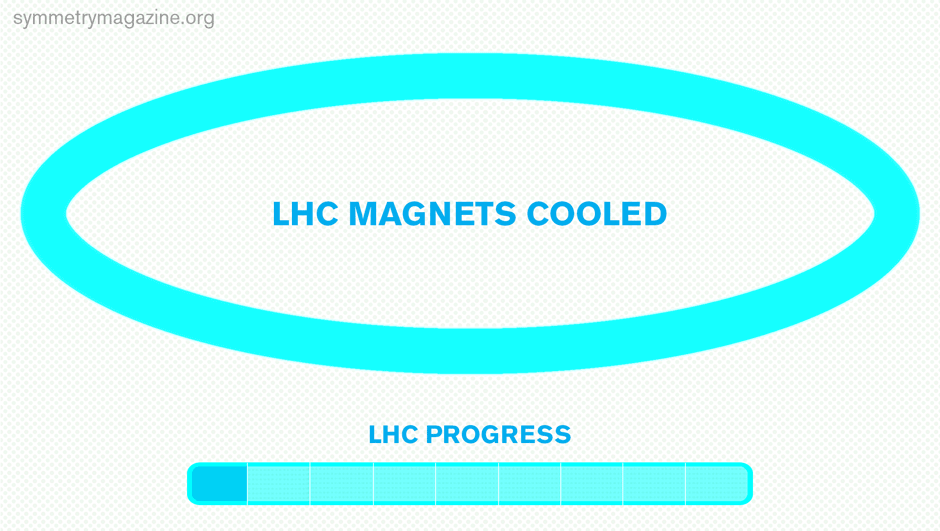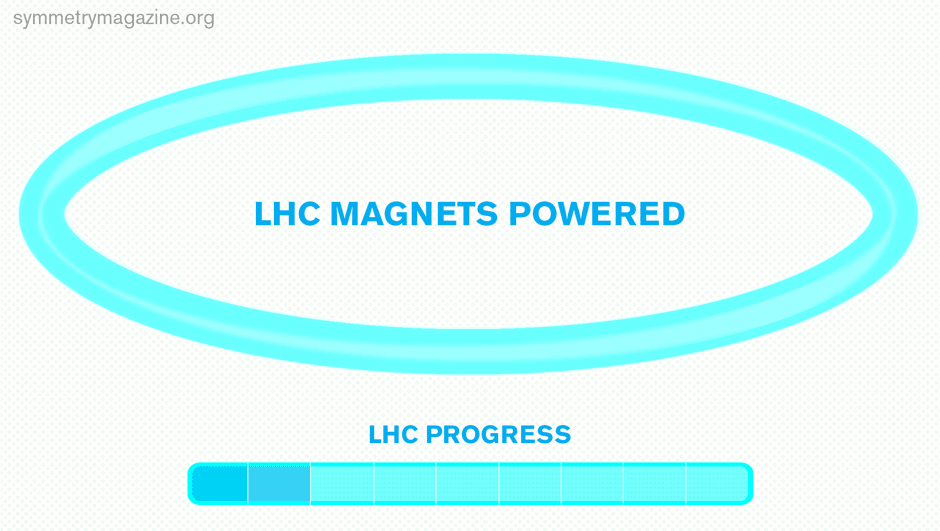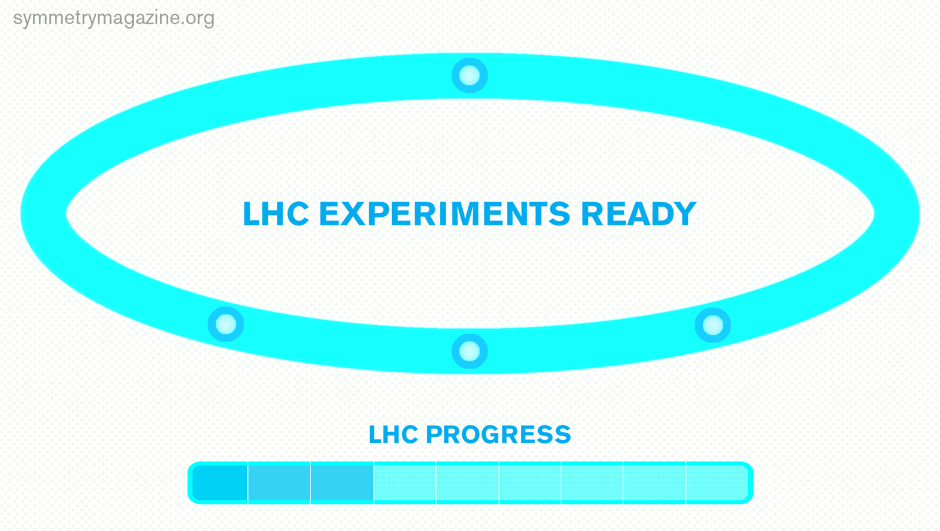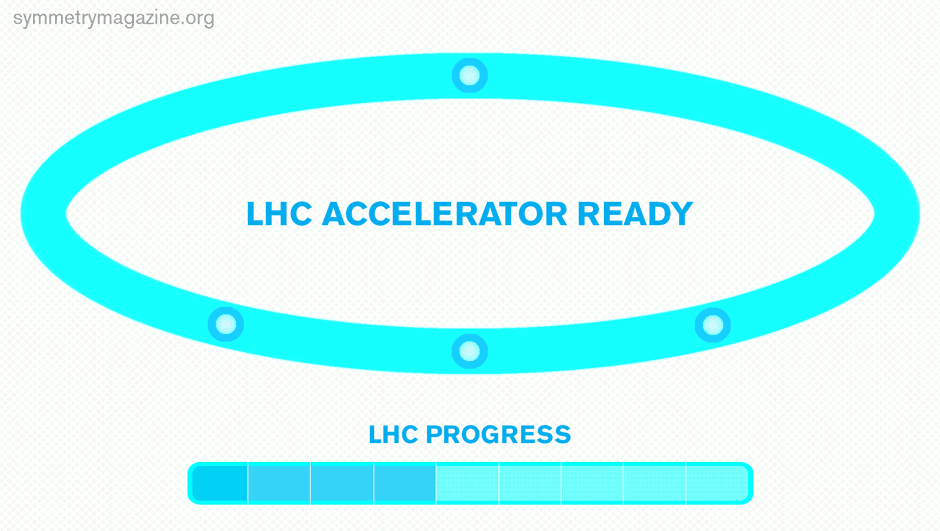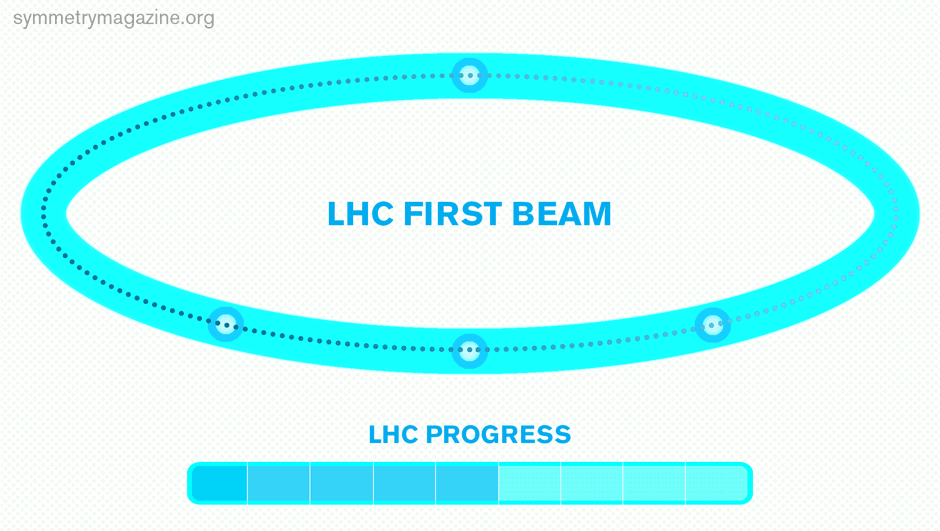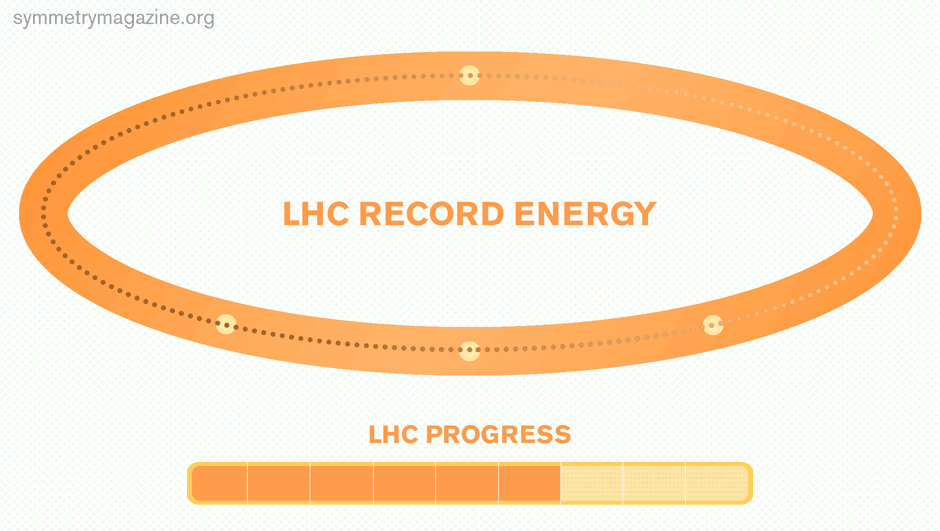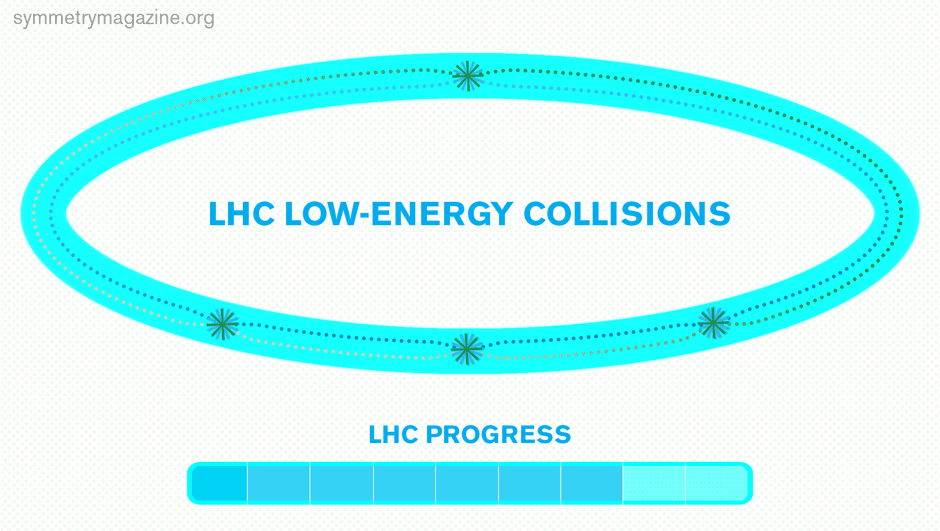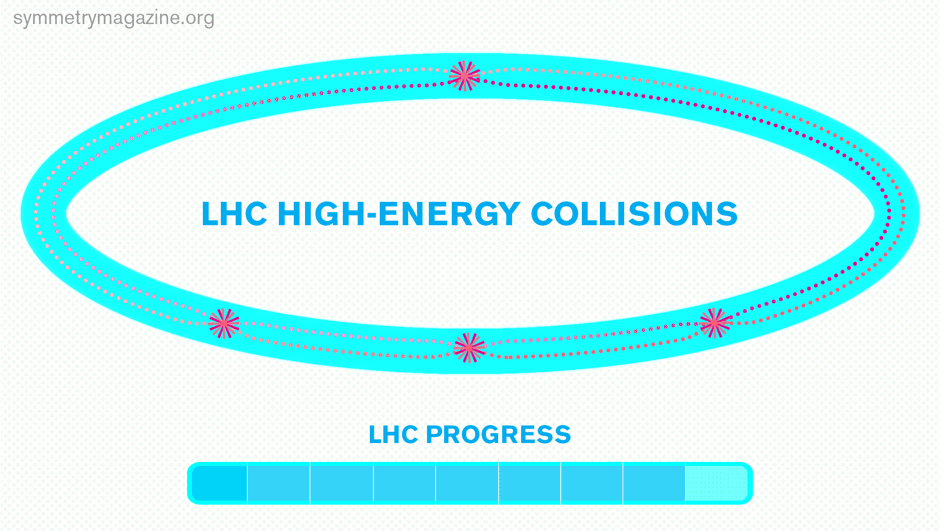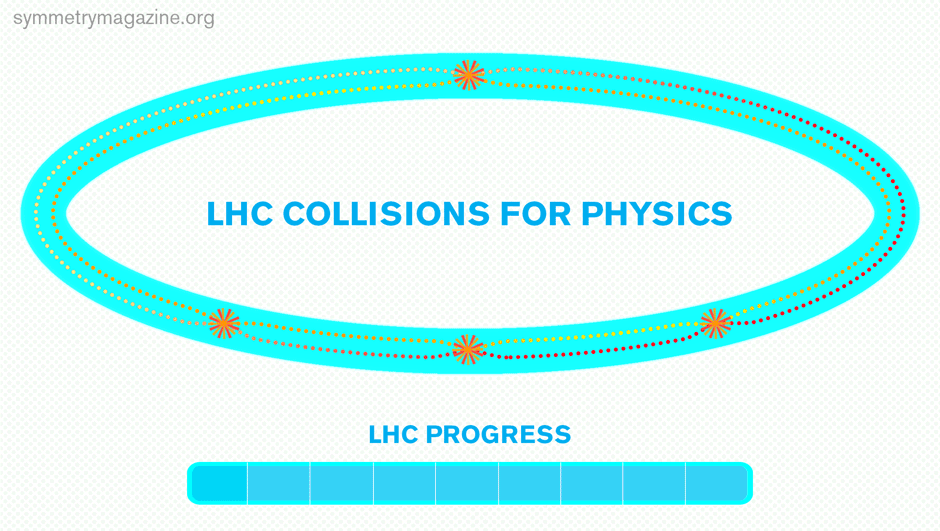The Large Hadron Collider isn’t just a cool particle accelerator. It's the coldest.
Last week the cryogenics team at CERN finished filling the eight curved sections of the LHC with liquid helium. The LHC ring is now cooled to below 4 kelvin (minus 452 degrees Fahrenheit).
This cool-down is an important milestone in preparing the LHC for its spring 2015 restart, after which physicists plan to use it to produce the highest-energy particle collisions ever achieved on Earth.
“We are delighted that the LHC is now cold again,” says Beate Heinemann, the deputy leader of the ATLAS experiment and a physicist with the University of California, Berkeley, and Lawrence Berkeley National Laboratory. “We are getting very excited about the high-energy run starting in spring next year, which will open the possibility of finding new particles which were just out of reach.”
The LHC uses more than 1000 superconducting dipole magnets to bend high-energy particles around its circumference. These superconducting magnets are made from a special material that, when cooled close to absolute zero (minus 460 degrees Fahrenheit), can maintain a high electrical current with zero electrical resistance.
“These magnets have to produce an extremely strong magnetic field to bend the particles, which are moving at very close to the speed of light,” says Mike Lamont, the head of LHC operations. “The magnets are powered with high electrical currents whenever beam is circulating. Room-temperature electromagnets would be unable to support the currents required.”
To get the 16 miles of LHC magnets close to absolute zero, engineers slowly inject helium into a special cryogenic system surrounding the magnets and gradually reduce the temperature over the course of several months at a rate of one sector cooled per month. As the temperature drops, the helium becomes liquid and acts as a cold shell to keep the magnets at their operational temperature.
“Helium is a special element because it only becomes a liquid below 5 kelvin,” says Laurent Tavian, the group leader of the CERN cryogenics team. “It is also the only element which is not solid at very low temperature, and it is naturally inert—meaning we can easily store it and never have to worry about it becoming flammable.”
The first sector cool-down started in May 2014. Engineers first pre-cooled the helium using 9000 metric tons of liquid nitrogen. After the pre-cooling, engineers injected the helium into the accelerator.
“Filling the entire accelerator requires 130 metric tons of helium, which we received from our supplier at a rate of around one truckload every week,” Tavian says.
In January CERN engineers plan to have the entire accelerator cooled to its nominal operating temperature of 1.9 kelvin (minus 456 degrees Fahrenheit), colder than outer space.



